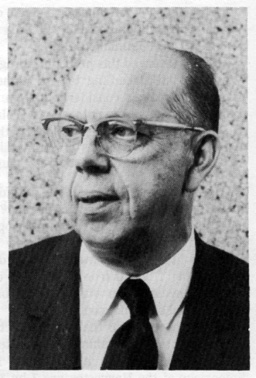 In comparison with other advanced countries, the United States is becoming a nation of scientific illiterates. Our principal commercial and military rivals have recognized that future superiority will rest heavily on competence in applied science and engineering, and they are preparing their young people for the world of the future. For example, in Japan instruction in science begins in the first grade. From the third through the ninth grades, science and mathematics are required and constitute two of the four major courses taught. Most students who intend to go on to universities continue to take science and mathematics courses in upper secondary schools. Their curriculum includes differential and integral calculus and probability and statistics.
In comparison with other advanced countries, the United States is becoming a nation of scientific illiterates. Our principal commercial and military rivals have recognized that future superiority will rest heavily on competence in applied science and engineering, and they are preparing their young people for the world of the future. For example, in Japan instruction in science begins in the first grade. From the third through the ninth grades, science and mathematics are required and constitute two of the four major courses taught. Most students who intend to go on to universities continue to take science and mathematics courses in upper secondary schools. Their curriculum includes differential and integral calculus and probability and statistics.
Conspicuous examples of American achievements, such as Nobel Prizes or pictures from the Voyager spacecraft serve to blind the public to the fact that a problem exists here. Acutally, the nobel laureates and the engineers responsible for Voyager are products of an earlier era. During their formative years (the 1940's and 1950's) a different attitude, one more favorable to science and engineering, prevailed in America. Around 1965 the environment for science and engineering began to
deteriorate, and while Nobel Prizes still come, our superiority in technology has about vanished.
A recent report on "Science and Engineering Education for the 1980's and Beyond" from the National Science Foundation and the Department of Education provides some sobering comments. At a time when the world faces an enormous need for engineers, the United States lags behind Japan, West Germany, and the Soviet Union in the number of engineering graduates per capita. The contrast is especially marked with respect to Japan, where engineering enjoys high prestige and the total number of degrees granted to engineers annually has surpassed that in the United States. In Japan 20 percent of all baccalaureate and about 40 percent of all master's degrees are granted to engineers. This compares with about 5 percent for each of these degree levels in the United States. Moreover, many of the U.S. graduates are foreign nationals.
In Japan an engineering degree is a favorable route to business and social success. The report states that in Japan "only about 50 percent of the engineers produced each year ... enter the engineering profession. The others become civil servants and managers in industry. Around one-half of the senior civil service hold degrees in engineering or related subjects ... In industry, about 50 percent of all directors have engineering qualifications."
The educational situation in Germany is similar to that in Japan, with emphasis on science and mathematics in primary and secondary schools. "The overall picture in Germany is one of a very high level of science and mathematics literacy among college graduates as well as strong science/mathematics understanding among the general population."
In the Soviet Union students are exposed to an intense mathematics and science curriculum. Algebra and geometry are taught in the sixth and seventh grades, and additional mathematics, including calculus, is part of the high school curriculum. All youngsters are required to complete 5 years of physics and 4 years of chemistry. About five times as many Soviet students as Americans go on to engineering training. The inefficiencies of the Soviet system dissipate much of this advantage, but one can scarely feel comfortable about the contrast in educational level between the military forces of the U.S.S.R. and the United States.
Our present policy is moving us toward becoming a colonial supplier of raw materials and food to more advanced countries and is placing us in a position of increasing peril. Unfortunately, there is no crisis to alert the public. The one positive factor operating at this time is a strong demand for engineering graduates, which is driving up salaries. Overcoming scientific illiteracy will take decades.
This editorial appeared in SCIENCE, Vol. 210, page 965, 28 November 1980 and is reprinted by permission. The editorial is Copyright 1980 by the American Association for the Advancement of Science.
 Philip H. Abelson is editor of SCIENCE, the weekly publication of the American Association for the Advancement of Science, a position he has held for 19 years. Born in Tacoma, Washington, in 1913, he received his B.S. in 1933 and M.S. in 1935 from Washington State College and his Ph.D. from the University of California in 1939. During W.W. II he was physicist with the Naval Research Laboratory and subsequently was with the Carnegie Institution becoming its President in 1971. A
recipient of many awards and honors Dr. Abelson's special interest is in physical chemistry. He has written many scientific articles and is author of the book "Energy for Tomorrow" (1975).
Philip H. Abelson is editor of SCIENCE, the weekly publication of the American Association for the Advancement of Science, a position he has held for 19 years. Born in Tacoma, Washington, in 1913, he received his B.S. in 1933 and M.S. in 1935 from Washington State College and his Ph.D. from the University of California in 1939. During W.W. II he was physicist with the Naval Research Laboratory and subsequently was with the Carnegie Institution becoming its President in 1971. A
recipient of many awards and honors Dr. Abelson's special interest is in physical chemistry. He has written many scientific articles and is author of the book "Energy for Tomorrow" (1975).
![[NAAPO Logo]](../../Images/NAAPOsm.jpg)
![[NAAPO Logo]](../../Images/NAAPOsm.jpg)